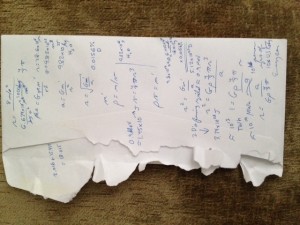I had a marvelous image: a synthetic planet in the Kuiper Belt–deep deep space, far beyond the orbit of Neptune–made solely from water. We let buoyant fusion reactors drift in its depths, fusing deuterium extracted from all that water to provide the light and heat needed to keep the planet liquid. (All that water makes a great neutron absorber). With a large enough volume, it would have a surface gravity close to Earth’s, or at least, strong enough to keep an oxygenated atmosphere from escaping to deep space. Imagine cities floating on the surface, with permanent night above and deeply lit ocean below, with enough cheap energy to fuel a civilization of a billion people, ten times richer than the modern day US, for ten million years….
Then I covered the back of an envelope  with some calculations of how much water that would take, and looked into the distribution of objects in the Kuiper Belt. Even if all the mass of the Kuiper Belt were water (in reality, it also includes a lot of methane and ammonia), and we converted it all into our synthetic ocean world, it would only provide about 5% of all the water we need. Not to mention that the gravitational potential energy released during the artificial accretion process would heat the planet to about 25,000 K and take tens of millenia to condense.
with some calculations of how much water that would take, and looked into the distribution of objects in the Kuiper Belt. Even if all the mass of the Kuiper Belt were water (in reality, it also includes a lot of methane and ammonia), and we converted it all into our synthetic ocean world, it would only provide about 5% of all the water we need. Not to mention that the gravitational potential energy released during the artificial accretion process would heat the planet to about 25,000 K and take tens of millenia to condense.
It’s a shame when the universe doesn’t care about our imaginations, isn’t it?